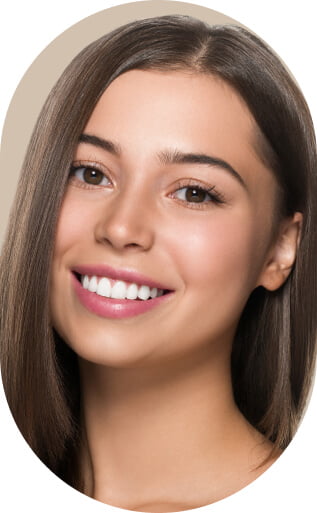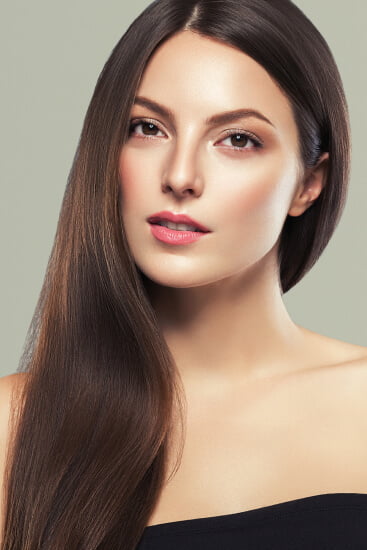Cheek Filler
with DrBfixin in Long Island, NY
Sharp, defined cheekbones have become a trend in women’s and men’s beauty. For women, sharp cheekbones that help make the face look slim and give the face definition are preferred. Whereas, for men, sharp cheekbones that are straighter and create more of a chiseled look—often mirroring the jawline—are considered ideal. Cameo Surgery Center helps patient explore their cheek augmentation and enhancement options, including dermal fillers. Dr. Scott Blyer and his team provide the best cheek filler Long Island and NYC.

Overview: Cheek Anatomy & Facial Aesthetics
According to facial aesthetics, the cheeks, chin, and nose should all be in harmony with one another. This roughly correlates with a face that follows an upside-down triangle used to evaluate facial aesthetics. The cheeks should project further to the sides than the chin and the nose and chin should be roughly in line with one another vertically. Most people’s faces do not exactly match this, but likely comes close in some areas.
A common complaint with the cheeks is that the cheekbones do not protrude far enough and the face looks too round, which bulges out from the triangle. To fix this, there are a few different possibilities. First, augmenting the cheekbones. Second, removing fat from beneath the cheekbones. Sometimes both techniques are performed.
Ways To Augment The Cheeks
- Dermal Fillers: Injecting dermal fillers just above the cheekbones is the most common method of augmenting the cheeks. The injections help naturally plump the cheeks, are malleable to best mold to the existing facial contours, and allow patients to address aging concerns. Fillers also carry less of a commitment than surgical results because they are either reversible or will go away over time.
- Threads: Non-surgical threads help lift the existing skin and tissues for a younger and refreshed look. While this does not add volume, it can help define the cheeks by repositioning sagging, loose skin back into place. Dr. B can bolster the effects of a thread lift with another cheek augmentation method too.
- Fat Transfer: Fat transfer to the cheeks does involve a surgical component, but it often does not require general anesthesia and does not involve the same type of recovery as traditional surgery. Using liposuction, Dr. Blyer will take fat from one area of the body and then inject it into the cheeks for an extremely natural looking cheek augmentation.
- Buccal Fat Removal: Buccal fat removal helps define the cheeks and cheekbones by surgically removing some or all of the fat below the cheekbones. This fat belongs to the buccal fat pad. In some people, the fat pad remains large and creates a round, child-like face. While this can help people look younger, it is unlikely to go away easily, even in old age. These patients are great candidates for buccal fat removal.
- Cheek Implants: For patients whose cheekbones are naturally undefined or where fillers will not adequately treat them, cheek implants may be an option. Cheek implants can also serve reconstructive purposes for cosmetic changes caused by trauma to the cheekbones. This is a more permanent cheek augmentation technique.
Candidates For Non-Surgical Cheek Augmentation
Most healthy people are candidates for cheek filler injections. As a non-surgical cosmetic procedure, it requires no anesthesia and carries little to no traditional recovery time. With that said, not everyone is a good candidate for non-surgical cheek augmentation. Cheek filler candidates generally have qualities such as:
- Overall good health
- Does not smoke
- Not allergic to any components in the filler
- Fully understands the benefits, risks, and limitations of the treatment
- Would benefit from filler injections in the cheek area
- Have realistic expectations
Benefits
Cheek filler carries many possible benefits some of which may include:
- Plump undefined or atrophied cheeks
- Treat fine lines and wrinkles
- Restore age-related volume loss
- Look younger
- Minimal pain
- Quick procedure
- Few risks
- Nearly instant results
- Temporary, alterations are possible during refresh appointments
- Performed by experienced and expert filler injector in Long Island
Types Of Cheek Filler
There are three primary types of filler that Dr. Blyer can use to augment or enhance the cheek area. During a consultation, he can discuss the differences and which may work best for an individual.
Hyaluronic Acid
Hyaluronic acid fillers are the most common and popular choice for cheek fillers. They are malleable, reversible, and provide natural-looking results. For patients new to filler injections, starting with HA fillers is recommended.
Poly-L-Lactic Acid
Poly-L-lactic acid is a longer lasting, semi-permanent filler option that helps produce more collagen at the injection site. This filler is particularly helpful for patients who experienced major fat loss due to a disease or trauma to the face. It needs to be refreshed less and over time may help add back some permanent, natural volume.
Calcium Hydroxyapatite
Calcium hydroxyapatite can be a beneficial cheek filler in certain situations. Once it settles, it mimics the look and feel of bone. This is advantageous for patients with small, undefined cheekbones or past trauma to or near the cheekbone.
Wonder If Cheek Filler Works The Best For You?
FAQs
Will Cheek Filler Lift My Face?
Filler creates the effect of a more lifted face. In some cases, it can help lift some lax skin by restoring lost volume. However, if the soft tissues of the cheeks sag, fillers will likely not adequately treat this. A midface lift, facelift, or similar anti-aging procedure may provide better results.
Will I Bruise After Cheek Fillers? What Side Effects Can I Expect?
Bruising may happen after cheek fillers. Though, patients can prevent it by limiting caffeine before and after the injections, choosing the cannula injection method, and avoiding anti-inflammatory medications for a few days before and after the treatment. While this does not guarantee no bruising will appear, it can help it be less severe and not last as long.
Side effects of cheek fillers tend to be mild and similar to any other injection received. If they occur, they generally subside quickly. Possible side effects include:
- Bruising
- Swelling
- Redness
- Pain
- Soreness
- Itchiness
- Tenderness
How Long Does Filler Last In The Cheeks?
The amount of time cheek filler lasts depends on the type of filler injected. Most hyaluronic acid fillers like Restylane Contour and Juvéderm Voluma last between six and twelve months. Some may last up to eighteen months. Semi-permanent fillers like poly-l-lactic acid and calcium hydroxyapatite last an average of two years.
What Does Cheek Filler Long Island Cost?
The starting cost of cheek filler Long Island is $689 per syringe for basic hyaluronic acid fillers. Specialized or semi-permanent fillers will incur additional costs.
How Painful Is Cheek Filler?
As an injectable, cheek filler generally is not too painful. Most fillers contain a small amount of lidocaine to ease pain during and after the injections. Additionally, patients can opt for a numbing cream to make the treatment more comfortable. Patients tend to tolerate the injections well.

The Best Long Island Cheek Filler By Dr. Scott Blyer
Cameo Surgery Center provides top quality cosmetic injectables. Their bottle service model prioritizes a luxurious and VIP experience for every patient. Whether new to filler or a seasoned veteran, Dr. B and his team aim to serve patients with the best cheek filler Long Island and NYC delivers.
To learn more and schedule a consultation, call us at 631-761-6239. Patients can also reach out online via chat or contact form.
